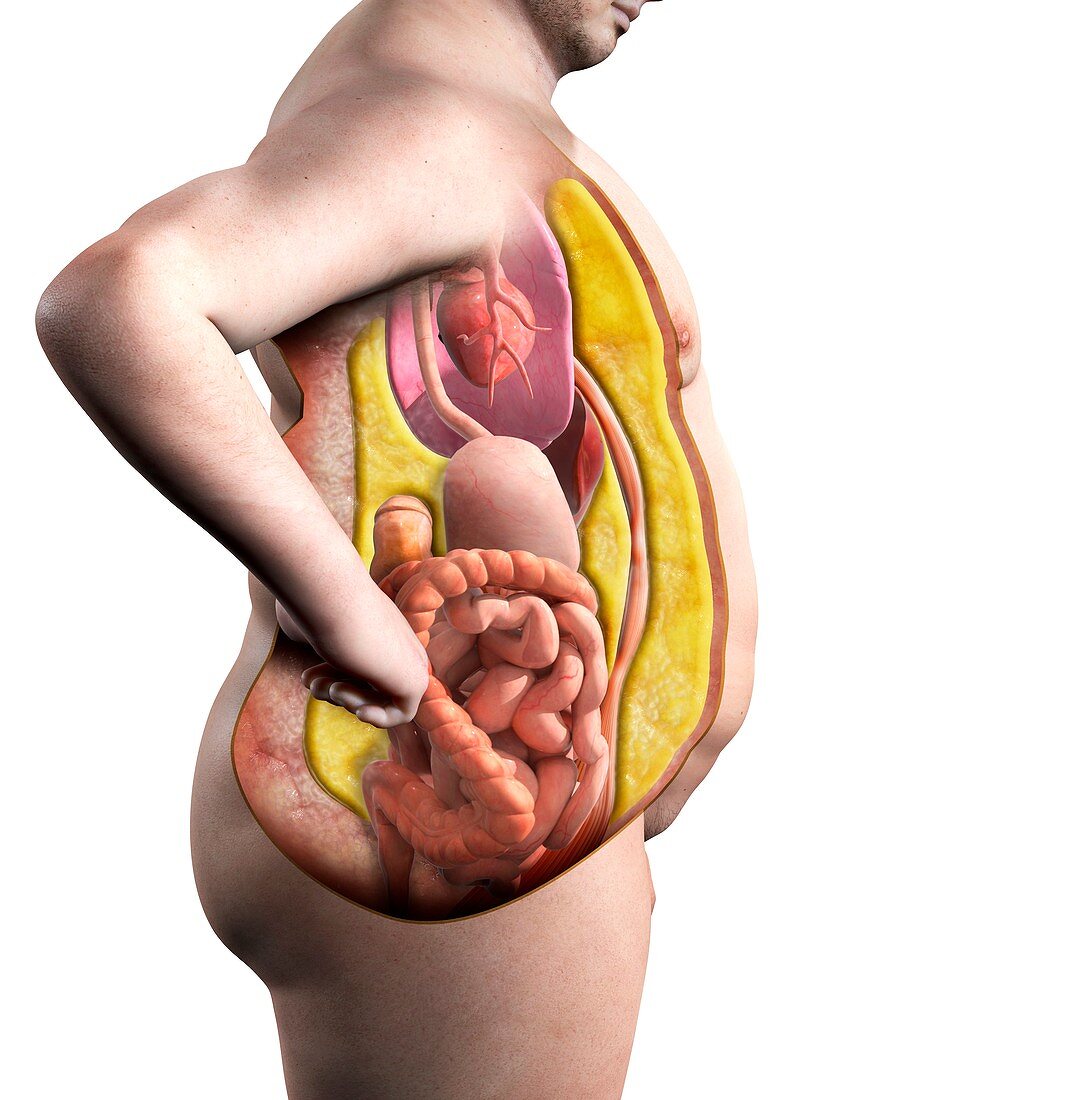Cardiovascular effects of obesity, illustration
Bildnummer 12553636

| Cardiovascular effects of obesity, cutaway illustration. Clinical obesity is defined as a body mass index (BMI) reading over 30. It is caused by the accumulation of excess fat (yellow). This fat can accumulate under the skin (shown at right), but can also accumulate inside the abdominal cavity (centre and left), attached to the abdominal organs. This is known as visceral or intra-abdominal fat. Excessive amounts of fat can interfere with the organs and with normal bodily functions, as well as putting pressure on the lungs and heart. Obesity is also associated with conditions such as high blood pressure, diabetes, and elevated blood cholesterol. Excess weight also means that the heart has to work harder. This can eventually lead to heart failure. | |
| Lizenzart: | Lizenzpflichtig |
| Credit: | Science Photo Library / Lunau, Claus |
| Bildgröße: | 4573 px × 4665 px |
| Modell-Rechte: | nicht erforderlich |
| Eigentums-Rechte: | nicht erforderlich |
| Restrictions: | - |
Preise für dieses Bild ab 15 €
Universitäten & Organisationen
(Informationsmaterial Digital, Informationsmaterial Print, Lehrmaterial Digital etc.)
ab 15 €
Redaktionell
(Bücher, Bücher: Sach- und Fachliteratur, Digitale Medien (redaktionell) etc.)
ab 30 €
Werbung
(Anzeigen, Aussenwerbung, Digitale Medien, Fernsehwerbung, Karten, Werbemittel, Zeitschriften etc.)
ab 55 €
Handelsprodukte
(bedruckte Textilie, Kalender, Postkarte, Grußkarte, Verpackung etc.)
ab 75 €
Pauschalpreise
Rechtepakete für die unbeschränkte Bildnutzung in Print oder Online
ab 495 €
Keywords
- Abdomen,
- abnormal,
- adipös,
- Adipositas,
- Bauch,
- Cutaway,
- Darm-,
- Erwachsene,
- Fett,
- Gedärme,
- geduldig,
- Herz,
- Illustration,
- Innere,
- innere Organe,
- innerhalb,
- intern,
- kardiovaskular,
- kaukasisch,
- klinisch,
- Kondition,
- Krankheit,
- Kunstwerk,
- Lungen,
- Mann,
- Männlich,
- Medizin,
- medizinisch,
- menschlicher Körper,
- Niemand,
- Störung,
- Übergewicht,
- Überschuss,
- ungesund,
- weißer Hintergrund
